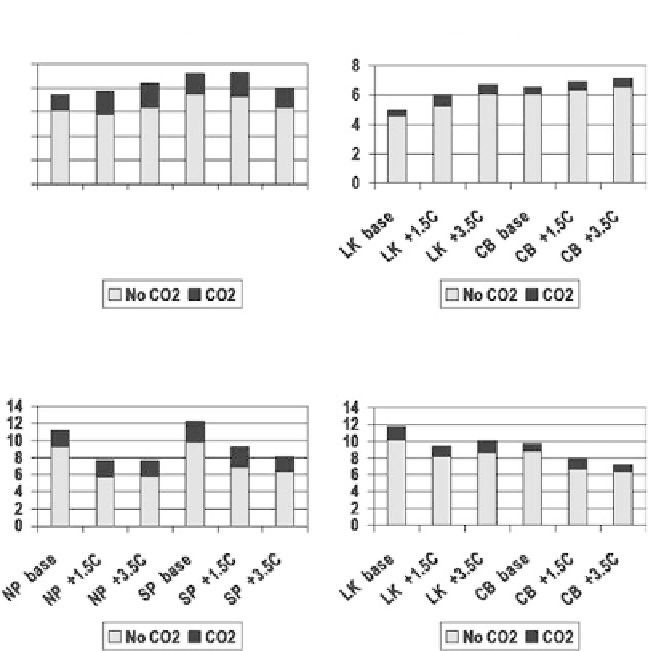Agriculture Reference
In-Depth Information
Wheat yield (Mg ha
-1
)
Maize yield (Mg ha
-1
)
5
4
3
2
1
0
8
6
4
2
0
No CO2
CO2
No CO2
CO2
Wheat WUE (kg ha
-1
mm
-1
)
Maize WUE (kg ha
-1
mm
-1
)
1
1
1
0
1
1
1
0
No CO2
CO2
No CO2
CO2
fIguRe 16.3
Modeled effects of climate change and CO
2
concentration on crop produc-
tivity and water use efficiency (WUE) in four U.S. regions: Northern Plains (NP), Southern
Plains (SP), Lakes (LK), and Corn Belt (CB). The term
base
refers to current climate. The
numerals 1.5 and 3.5 refer to increases in global mean temperature of 1.5 and 3.5°C, respec-
tively. Top panel: wheat and maize yields. Bottom panel: water use efficiency in wheat and
maize. (From Izaurralde, R.C., N.J. Rosenberg, R.A. Brown, and A.M. Thomson, 2003,
Agriculture and Forest Meteorology
117:97-122.)
As discussed, not all changes brought about by climate change may have a nega-
tive effect on agricultural production. From what we know, the so-called CO
2
fer-
tilization effect or some benign warming may benefit crop production, at least in
regions where the changes in temperature and precipitation are favorable. It is also
anticipated, however, that climate change will not only change the mean conditions
of climate properties but also their distribution and frequencies likely will increase
the occurrence of extreme events such as droughts and floods. For the last decade and
a half, research and technical efforts have concentrated on climate mitigation and, in
the case of agriculture, deploying technologies such as soil carbon sequestration and
non-CO
2
greenhouse gas reductions (N
2
O and CH
4
). Many believe, however, that the
time to start adapting to climate change is now. In November 2006, the U.N. Climate
Change Conference held in Nairobi, Kenya (UNFCC, 2007) sent a clear message






